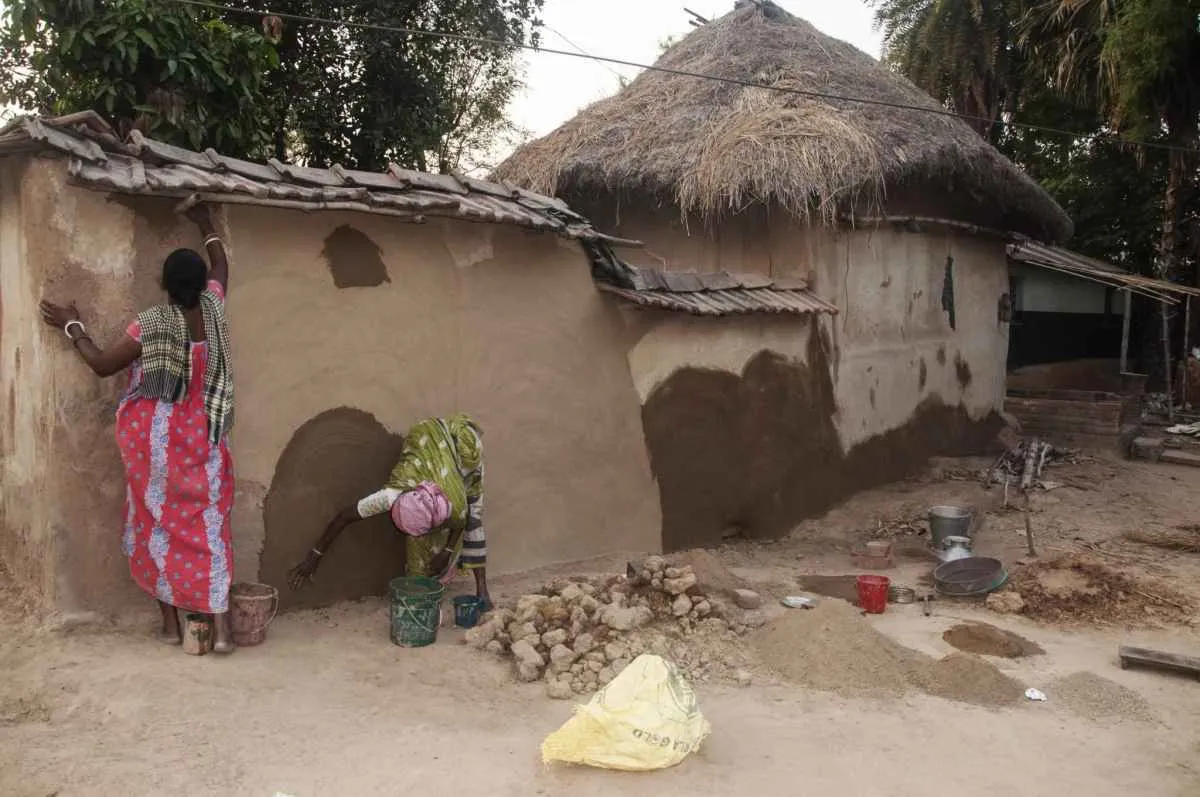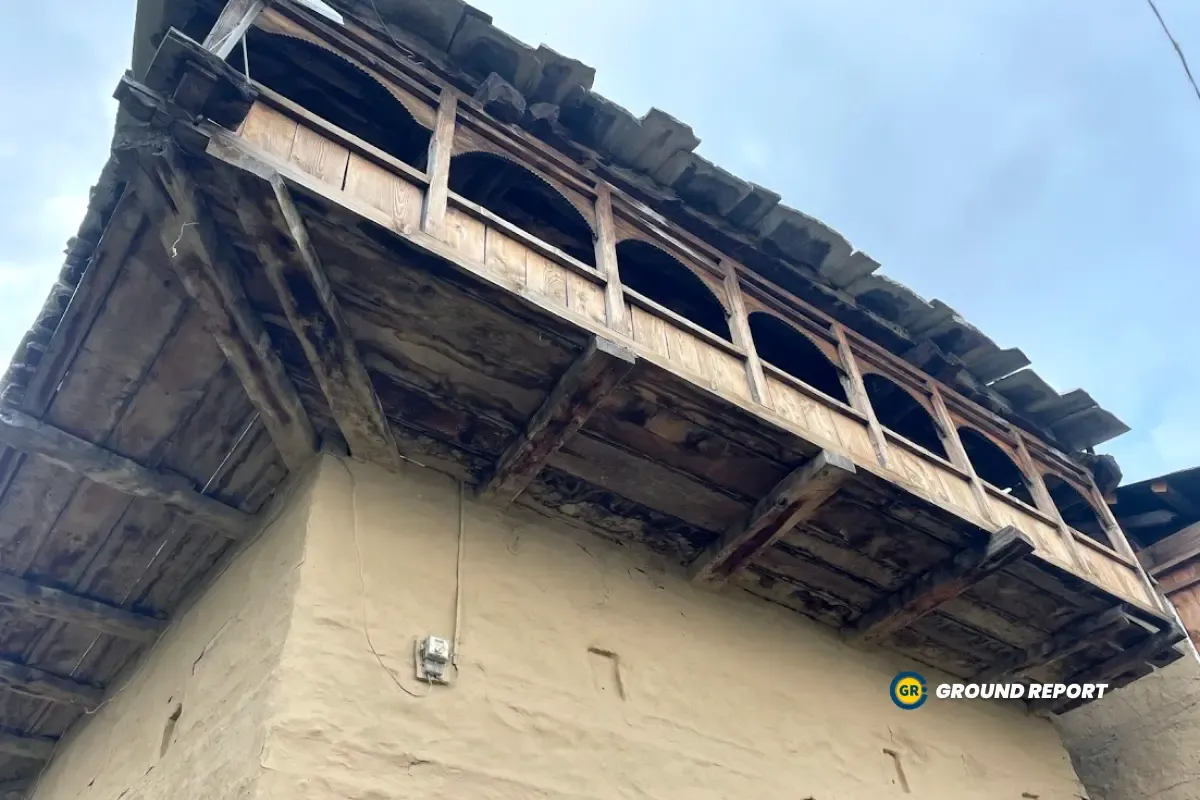With increased environmental awareness among the elites, there is a growing trend or inclination towards building sustainable houses. As per common architects we interviewed, people in the cities are getting mud houses built as their second homes. For similar projects, these architects are looking for skilled artisans with an understanding of traditional mud houses. The traditional mud houses were a common choice for a lot of people in rural areas of India. Hence, there are still many local artisans looking for work and have switched to daily wage work.
If the construction of mud houses picks up pace, these artisans may get new employment opportunities. There is a need for a platform where these artisans can register themselves, and from here architects working in sustainable housing can provide them employment. There are immense possibilities for women to get employment opportunities. Let us try to talk about them in detail in this article.
Story of Badrinarayan who built traditional houses
Many such artisans are still living in Sekarkhedi village of Sehore district, some 35 kilometres away from Bhopal, the capital of Madhya Pradesh. Badrinarayan, 45, said,
“I learned house construction at the age of 18. At that time there were many others in our village. Some people used to do brick-laying work, and some were experts in plastering houses by making a special paste of mortar. My work was mainly to prepare the structure of the house from wood. But as the trend of construction of concrete houses increased, everyone left this work and went in search of new employment. “
As per Badrinarayan, the primary task in constructing a mud house involves preparing the wooden structure, upon which bricks are then shaped and the Kabalu roof is formed. The process of preparing the wooden frame typically requires two weeks, but this duration could be extended if the house is bigger. Most of the time is consumed in selecting and cutting the wood, after which one week is typically sufficient for framing. Precision is critical during the framing step as the wooden pillars bear the full weight of the house. Any slight inaccuracies could potentially compromise the stability of the house.

Here Badrinarayan mentioned that he shifted to being a carpenter and started making doors, and windows. Later, his son also interjected and said, we make other furniture items also. And, the reason for the shift is limited job opportunities for the skills they have.
Badrinarayan earns a daily wage of Rs 600-700, but it is increasingly difficult to secure such jobs nowadays.
“I like building a traditional house, I don’t feel like making furniture, but what if I have to run a house, I have to do whatever work comes my way.”
But, when and how did we shift from mud-wood-based homes to concrete? When did bricks replace stones in the house building? A more pertaining question, which houses are better, resilient, and sustainable? We don’t ask these questions when we start building a house, do we?
Badri’s Mud House, and Omprakash’s new struggles
Omprakash– Badrinarayan’s son–had learned the skills of house construction from his father. As mentioned, he now makes furniture and earns enough to run his household. Interestingly, Omprakash and Badrinarayan themselves live with their families in a house made of mud and talk fondly about the perks. Omprakash says that
“People consider a house made of mud will instantly give a person ‘poor’ status. Our generations have been living in this type of house. During summers, I think it is difficult to live in concrete houses. But here, we never need to run a cooler“
Omprakash hasn’t yet benefitted from the Pradhan Mantri Gramin Awas Yojana. We asked him if he got money to build a house, would he still not build a pucca house? On this question, Omprakash says that
“Sir, it is mandatory to build a concrete house from the Pradhan Mantri Awas Yojana, that is why we will have to build that house. But if the government allows us to build mud houses, we will build a better house, and also save a lot of money.”
Numerous individuals, such as Badrinarayan, are well-versed in constructing traditional houses in Saikdakhedi and nearby villages. Women demonstrate expertise in crafting bricks and applying plaster for these houses, a skill honed over years of building their own homes. However, their work has never been perceived as a potential employment prospect, and the idea of transforming these skills into a revenue stream has never crossed their minds.

What do we want?
According to , who are involved in sustainable architecture in Pune, Maharashtra, the biggest difficulty they face is finding skilled artisans for their work. When they build a mud house at any place, they try to employ mostly local villagers for this work because these people have a good understanding of the local construction materials. Especially the work of preparing a wooden frame is very complex which modern carpenters are not able to do well.
“We first have to give training to these carpenters, there is a lot of understanding only then they can do the work that we expect. If we get old experienced artisans then our work will become easier.”
, Architect
Dhruvang observes a surge in the demand for mud houses. They have numerous inquiries, they can only undertake 3-4 projects annually. He believed, that as environmental consciousness increases, this industry is expected to grow. However, the ensuing issue will be the lack of skilled or local artisans.
says,
“It is not so easy for mud houses to return to the mainstream. Most people approach us for a second home, but we help only those who want to build their first house with mud. In villages, you cannot ask people to return to mud houses because concrete houses have become a symbol of human prosperity. It is seen in relation to the growth of a person.”
Keep Reading
Indian agriculture household earns just Rs. 10,218 in a month: Govt
Post-harvest losses still high, reveals data shared in Lok Sabha
Khadi Haat village’s power-free wastewater treatment solution and more
Support us to keep independent environmental journalism alive in India.
Follow Ground Report on X, Instagram and Facebook for environmental and underreported stories from the margins. Give us feedback on our email id greport2018@gmail.com.
Don’t forget to Subscribe to our weekly newsletter, Join our community on WhatsApp, and Follow our YouTube Channel for video stories.







